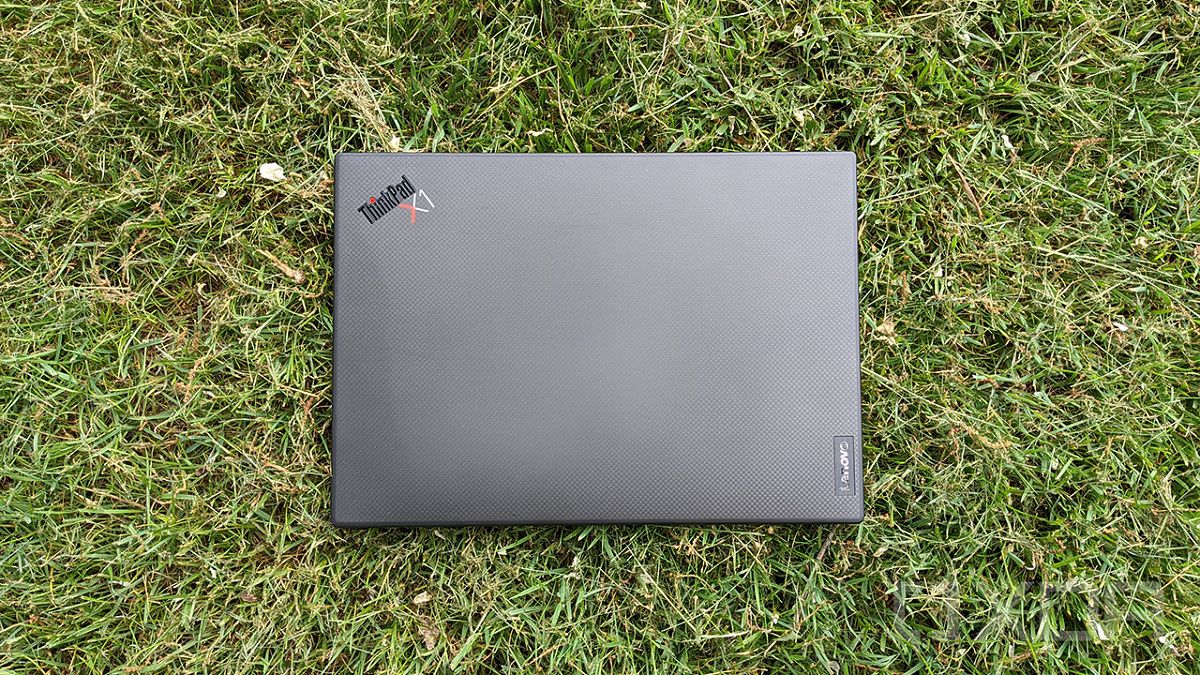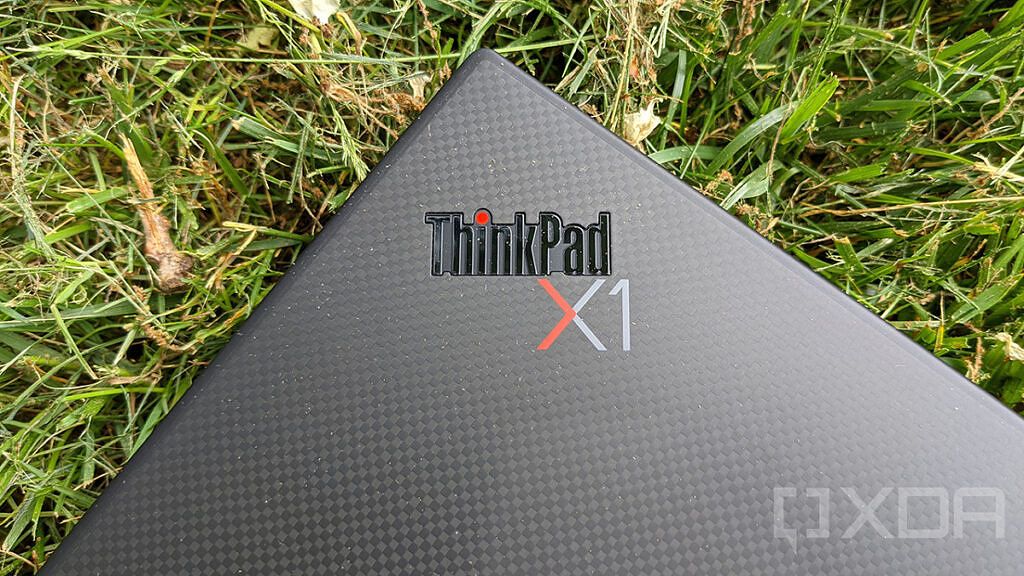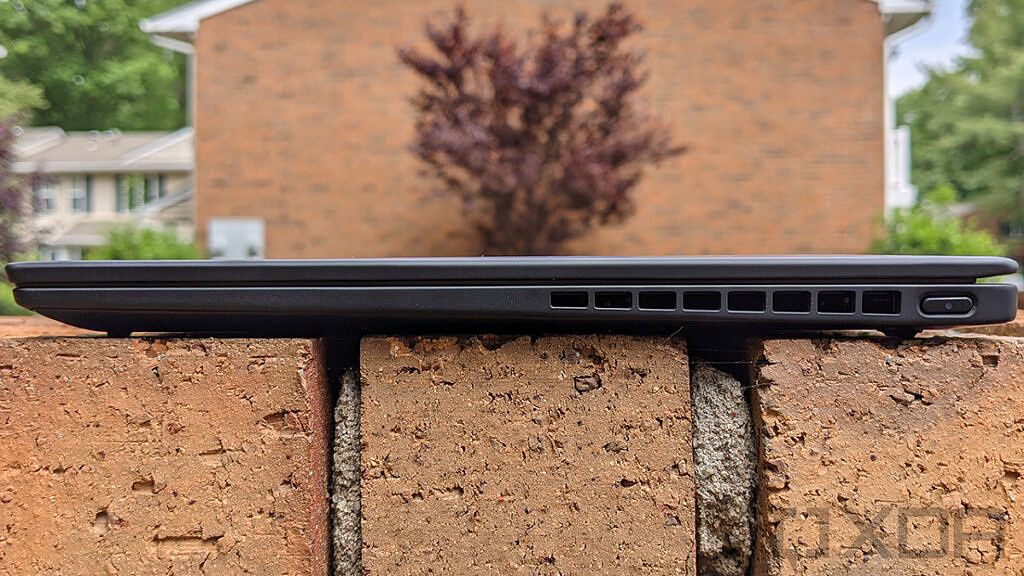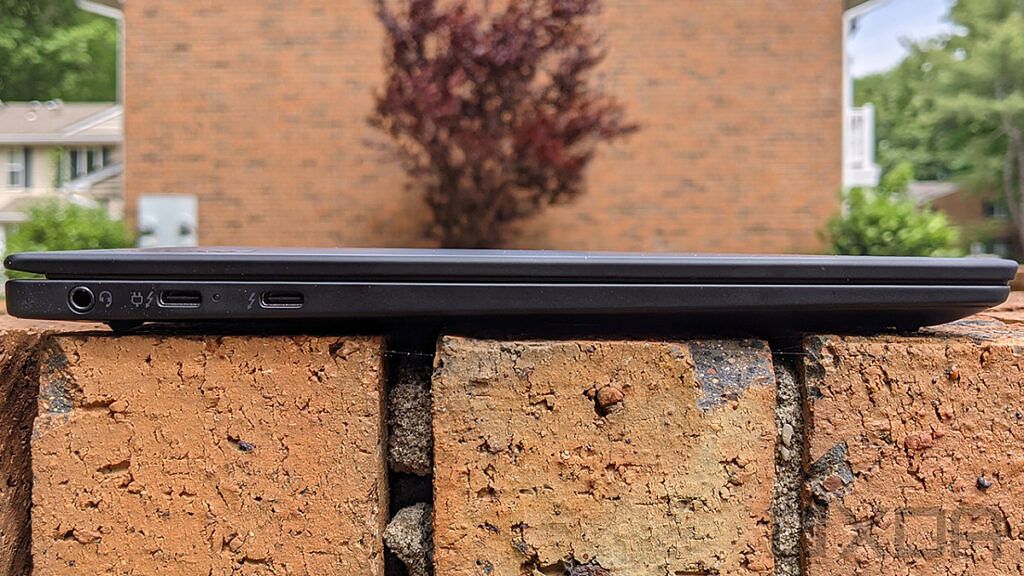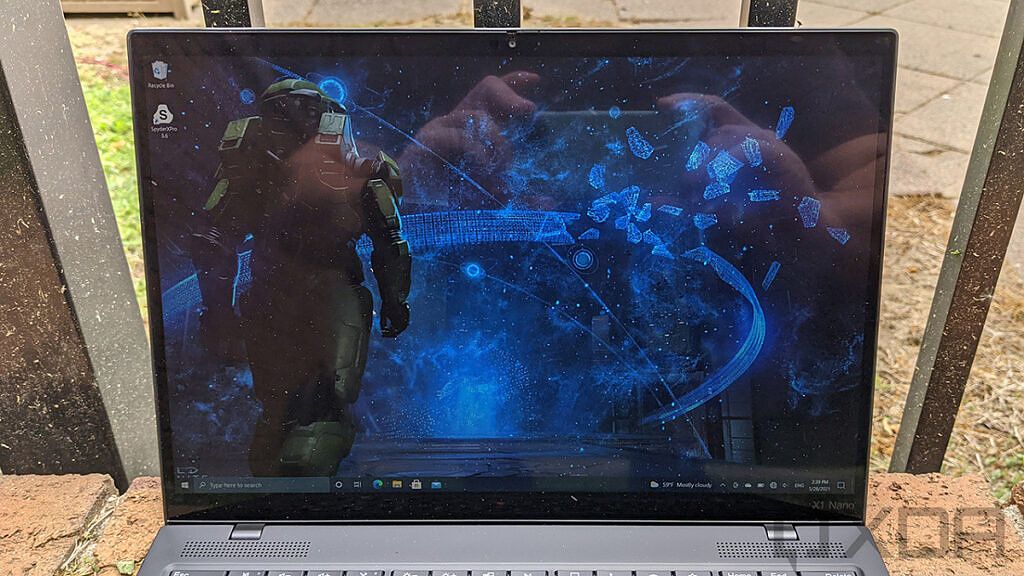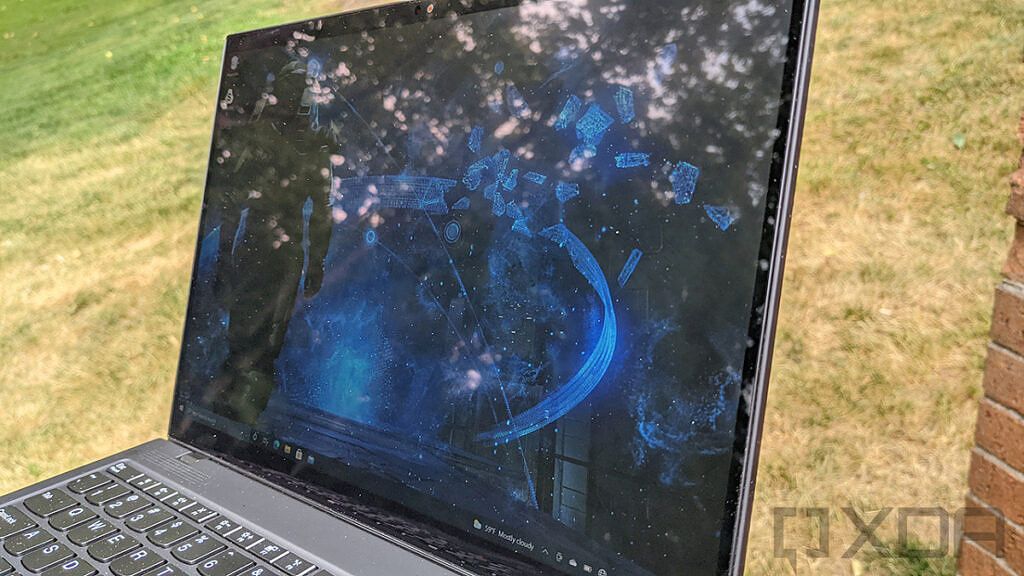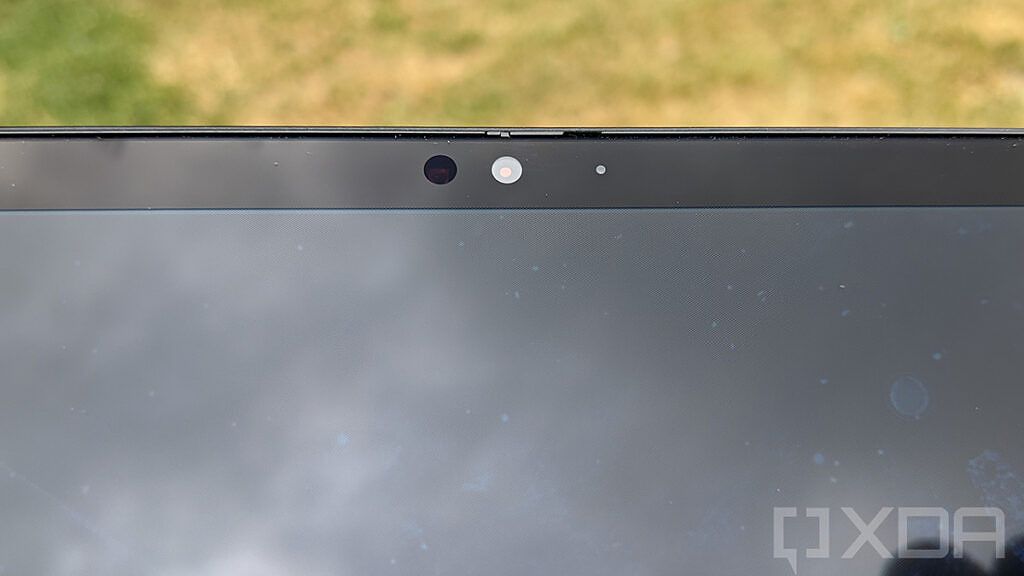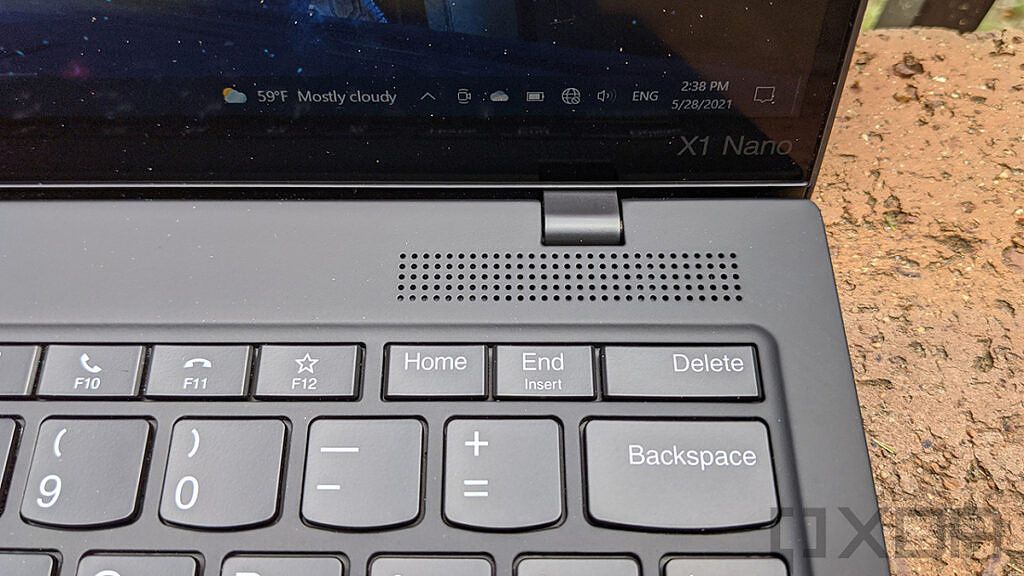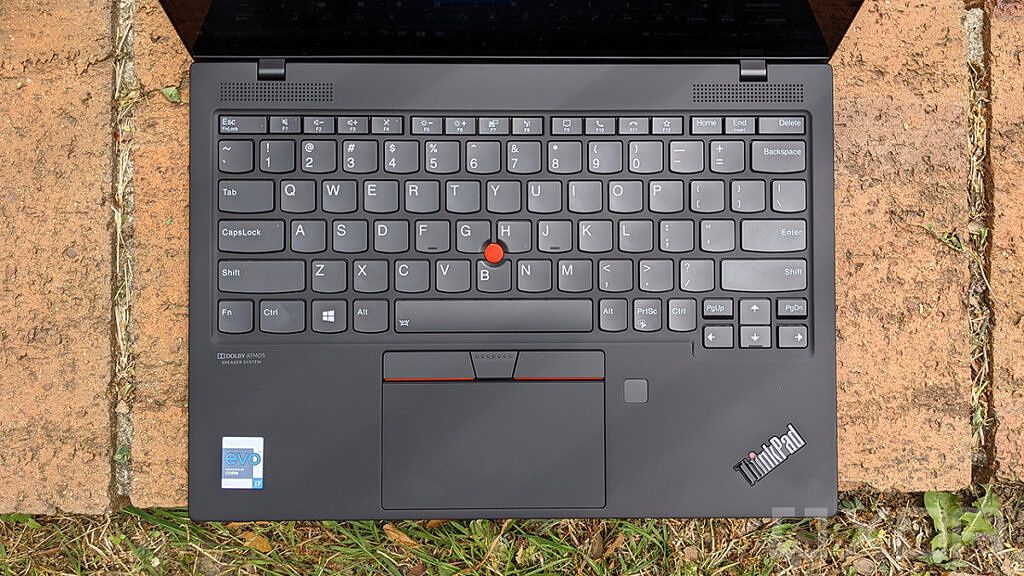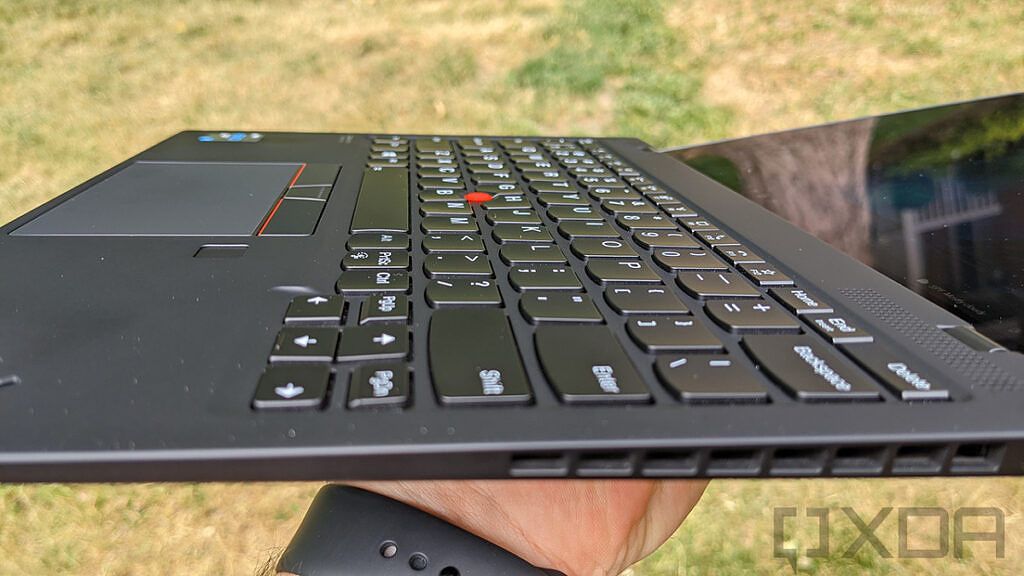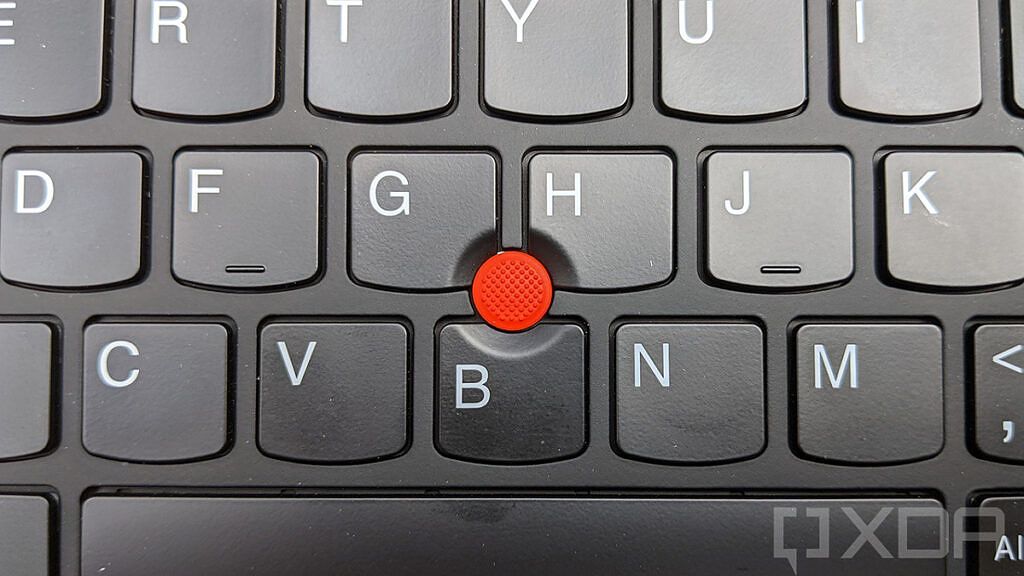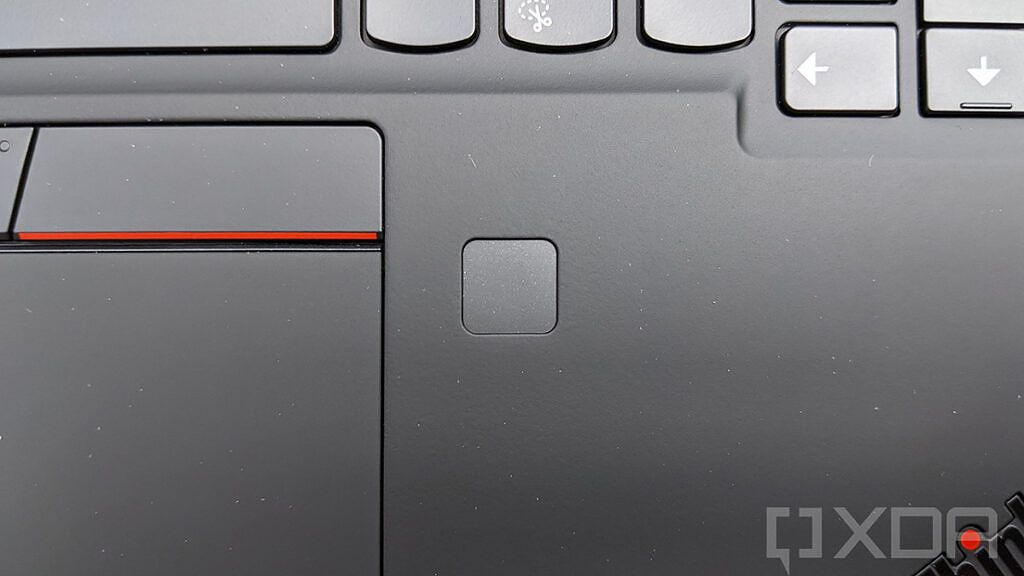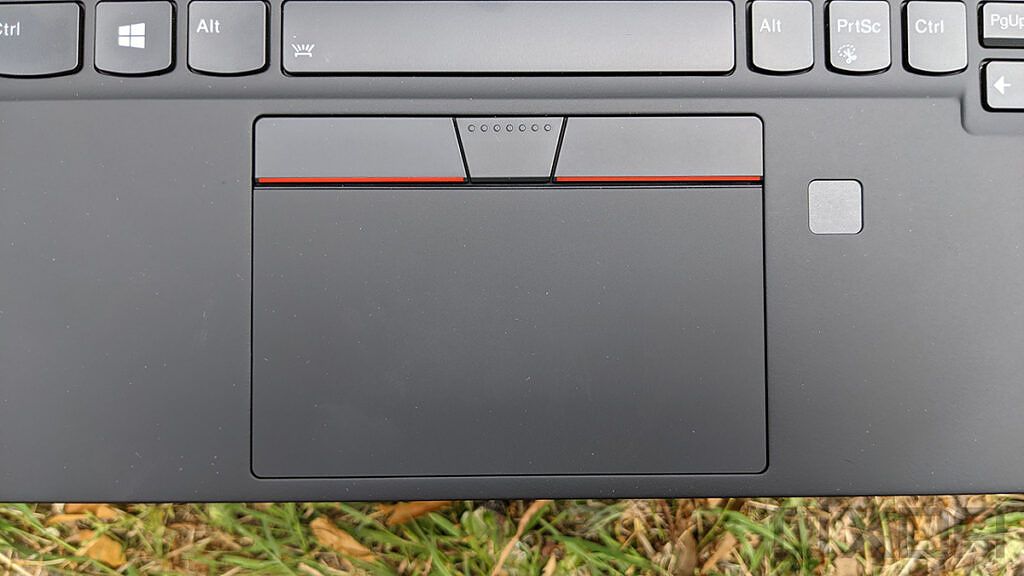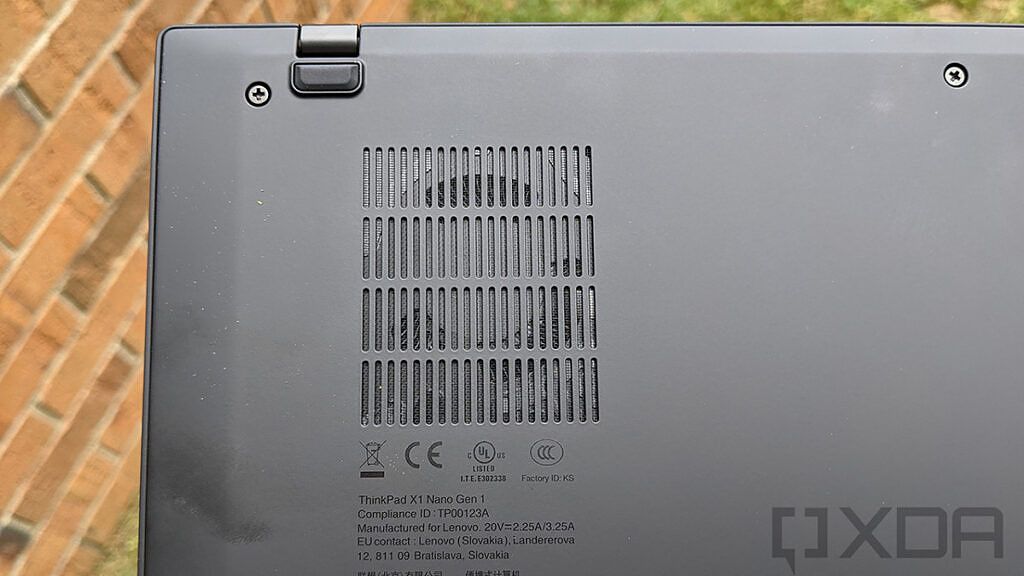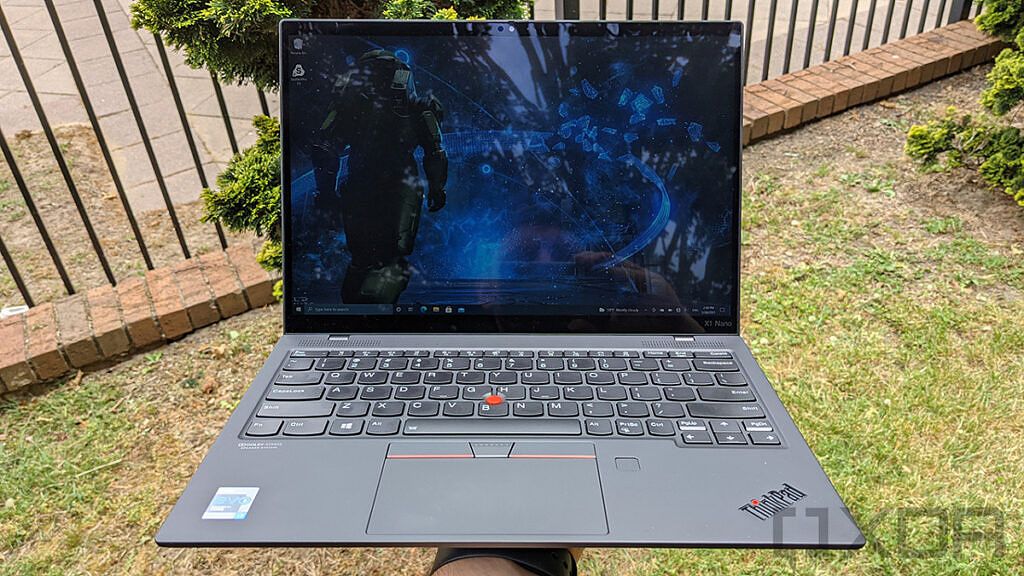Lenovo's ThinkPad X1 Nano is a phenomenal PC. I've already said as much when I compared it to the ThinkPad X1 Carbon. They're both meant to be premium, thin and light laptops for businesses, but the ThinkPad X1 Nano is next-level thin and light. This is actually the second one that I've reviewed, as Lenovo was kind enough to send over the multi-touch model.
The ThinkPad X1 Nano weighs in at just 2.14 pounds. It's the kind of thing that if you carry it in your backpack, you have to check and make sure that it's in there. The best part is that doesn't really make compromises to get that thin and light, as the Intel processors under the hood are really good.
It's also the first 16:10 ThinkPad, something that was way more of a big deal in December when this was first announced. Then, CES came in January and 16:10 screens became more common for everyone.
Navigate this review:
- ThinkPad X1 Nano: Specifications
- Design: The ThinkPad X1 Nano weighs around two pounds, depending on your config
- Display and audio: It has a 2K screen and Dolby Atmos
- Keyboard: The ThinkPad X1 Nano has new 1.35mm keys
- Performance: Y-series? Y not?
- Conclusion: Should you buy the Lenovo ThinkPad X1 Nano?
Lenovo ThinkPad X1 Nano: Specifications
|
CPU |
Intel Core i7-1160G7 |
|---|---|
|
Graphics |
Iris Xe |
|
Body |
292.9x207.8x14.27-17.2mm (11.53x8.18x0.56-0.68in), 969g (2.14lbs) |
|
Display |
13.0" 2K (2160 x 1350) IPS, anti-reflective, anti-smudge, touchscreen with Dolby Vision, 450 nits, 100% sRGB |
|
Memory |
16GB LPDDR4x 4266MHz (Soldered) |
|
Storage |
512GB PCIe SSD |
|
Battery |
48WHr, up to 13 hours |
|
Security |
|
|
Audio |
|
|
Camera |
Hybrid infrared (IR) / 720p HD with webcam privacy cover |
|
Connectivity |
|
|
Ports |
|
|
Keyboard |
|
|
Material |
Top: Carbon fiberBottom: Magnesium alloy |
|
Color |
Black with Carbon-Fiber Weave on the top cover |
|
OS |
Windows 10 Pro |
|
Price |
$1,315.85 |
The price I listed for the ThinkPad X1 Nano is based on the product page on Lenovo.com, but that price always fluctuates. Lenovo never actually charges what would be considered full-price on a ThinkPad, and the "instant savings" and eCoupons always vary.
Note that this model weighs in at 2.14 pounds. The non-touch model that I previously reviewed came in at 1.99 pounds, so it does make a difference between the touch and non-touch models. Adding cellular puts on a bit of weight as well.
Design: The ThinkPad X1 Nano weighs around two pounds, depending on your config
The ThinkPad X1 Nano comes in two colors: black, and another kind of black. Lenovo sent me the latter, which is actually a carbon fiber weave design. The carbon fiber weave is exclusive to the touchscreen model, so if you want the 1.99-pound non-touch version, you'll have to get regular black.
There's not a whole lot to talk about when it comes to the general design of a ThinkPad. It's a pretty standard look and feel that stretches across most of the lineup. Indeed, almost all of them just come in black, and they all have those squared-off corners and a ThinkPad logo stamped in the corner. For premium models, there's the glossy black ThinkPad logo that we see here.
I quite like the ThinkPad X1 Nano's carbon fiber weave design, and obviously, I've seen it on a number of ThinkPads. It's just something a little bit different. I'm a bit surprised that Lenovo reserved it for the touch model since I think the non-touch one is the more desirable configuration. That's the one that actually comes in at under two pounds, a key feature of the ThinkPad X1 Nano.
This one is just over two pounds, which is still incredibly light. As I said, it's the type of device where if you walk out of the house with the laptop in your backpack, you'll have to check and make sure you remembered to put it in your bag. The ThinkPad X1 Nano is just that light that you won't even be sure it's in there.
The ThinkPad X1 Nano is the type of device where if you walk out of the house with it in your backpack, you'll have to check and make sure you remembered to actually put it in your bag.
On the right side, there's just a power button. This is only interesting if you're into ThinkPad design as Lenovo used to put a circular power button on the keyboard deck for clamshells like this. A couple of years ago, Lenovo moved the button to the side to make it consistent with its convertibles. This year for the ThinkPad X1 series, the company moved the button back to the deck, making it double as a fingerprint sensor. But being that this laptop was announced in December rather than alongside the rest of the lineup, the ThinkPad X1 Nano missed out on that memo. Expect to see that on Gen 2.
On the left side, there are two Thunderbolt 4 ports and a 3.5mm audio jack. If you need more ports than that, I suggest checking out the ThinkPad X1 Carbon. The two laptops fall under the umbrella of premium ThinkPads that are designed to be thin and light, but the Carbon maintains a lot of legacy support.
With Thunderbolt 4 support on the ThinkPad X1 Nano, you can connect dual 4K displays on a single port, or you can connect an external GPU. Here's a better plan. You can connect an external GPU to one of the Thunderbolt ports, connect dual 4K displays to the external GPU, and then use the other Thunderbolt 4 port to connect a dock and add some ports. That's what I actually did at one point, and I sat and played Forza Horizon 4 on Ultra graphics settings on a 2.14-pound laptop.
Display and Audio: It has a 2K screen and Dolby Atmos
The Lenovo ThinkPad X1 Nano doesn't have a lot of display options like some more mature ThinkPads. You've pretty much got touch and non-touch. They both have 13-inch 2160 x 1350 450-nit panels that support Dolby Vision HDR. Aside from touch support, one key difference is that the non-touch model has an anti-glare screen while the multi-touch one has a glossy one.
The display has a 16:10 aspect ratio, and as I said earlier, the ThinkPad X1 Nano is the first modern ThinkPad to use the taller aspect ratio. Back in the old days, they had 4:3 aspect ratios, but then the industry moved to 16:9 when HD got popular. It's always been generally accepted that taller screens are better for productivity, and we're finally seeing the industry moving back in that direction.
The ThinkPad X1 Nano definitely has a pretty screen, and I really appreciate that it's 2160 x 1350 in resolution instead of 1920 x 1200. Those extra pixels definitely make a difference. In my testing, it supports 99% sRGB, 72% NTSC, 77% Adobe RGB, and 77% DCI-P3.
I really appreciate that the ThinkPad X1 Nano has a 2160 x 1350 resolution screen. Those extra pixels definitely make a difference.
Sadly, the webcam is a bust. It's only 720p in resolution, a real shame in the era of working from home. It does have a built-in privacy guard, so you don't have to worry about putting tape over it or anything. I just wish Lenovo had packed a 1080p webcam. Fortunately, Lenovo did add an IR camera on the ThinkPad X1 Nano for Windows Hello support, so you do get built-in facial recognition.
Finally, we've got Dolby Atmos audio on the ThinkPad X1 Nano, with two speakers above the keyboard and two underneath the device. It has the clarity that Dolby Atmos is known for, but the volume isn't terrifically loud. It's fine for music at your desk, but it won't fill the room. It's also great for calls, of course, especially with its four 360-degree microphones.
Keyboard: The ThinkPad X1 Nano has new 1.35mm keys
Lenovo's ThinkPads are renowned for having some of the best keyboards, but what if I told you that this keyboard was different from the rest of the pack? Well, it is, and personally, I think it's way better.
I think the X1 Nano's keyboard is way better than other ThinkPad keyboards.
The ThinkPad X1 Nano has 1.35mm keys, rather than the 1.5mm keys that you'll find on most ThinkPads. While Lenovo ThinkPads always had amazing keyboards in terms of comfort and accuracy, the key throw always felt a bit long, even though competing laptops have shallower keyboards.
It's actually the same keyboard, but even shallower. There's a lot of engineering that went into everything about this PC. Making the keyboard shallower without changing the feel was a big part of that.
Obviously, the ThinkPad X1 Nano still has the iconic ThinkPad TrackPoint, ie. the little red nub that lets you control the pointer. It's a relic from the age when Windows touchpads were terrible, but on ThinkPads, it's just not going anywhere. If you love it, you can use it; if you hate it, just ignore it.
Note that there's a fingerprint sensor next to the touchpad. That's something that's going away at least on some ThinkPads but is still there on the ThinkPad X1 Nano. As I mentioned above, the power button is moving to the keyboard deck with newer ThinkPads where it doubles as a fingerprint sensor. It's just fascinating to me that this laptop is a brand-new ThinkPad X1 from the ground up, but it's still missing some of the features that shipped just a month or two later.
Finally, there's the Microsoft Precision touchpad, which has physical buttons above it. I like the physical buttons -- it makes dragging and dropping easier. Still, they're designed for use with the TrackPoint, and since the TrackPoint isn't going anywhere, neither are those buttons.
Performance: Y-series? Y not?
The ThinkPad X1 Nano that Lenovo sent me has an Intel Core i7-1160G7 and 16GB RAM, the exact same specs as the first unit the company sent me. The processor is from the Tiger Lake UP4 family.
UP4 is the successor to the Y-series, and even before that, it was known as Core M. I know; I'm throwing around a lot of bad words here. But just because I'm saying things like "Y-series" and "Core M", don't run away just yet. These Intel CPUs are actually good.
Compared to the eighth-generation 'Amber Lake' (10th-gen 'Ice Lake' barely even shipped), there are some major differences. The TDP has been boosted, there are four cores instead of two, and the graphics are much, much better. Now, we've got Iris Xe graphics, which are clocked at 1.1GHz and have 96 execution units. Honestly, the integrated graphics on the eighth-gen Y-series were a joke.
Y-series was designed for fan-less PCs, and yes, the Lenovo ThinkPad X1 Nano does have a fan. But the fact that Tiger Lake UP4 is so good is why this PC can exist. In fact, the same goes for the ThinkPad X1 Titanium Yoga. If this laptop came out two years ago, I wouldn't recommend it in a million years. In case you missed the badge in the beginning, though, I think the ThinkPad X1 Nano is a top pick.
With Tiger Lake UP4, it seems like there are no meaningful compromises left.
The Intel Core i7-1160G7 is great for productivity, but it can do more than that too. You won't have any issues with editing images in Photoshop, and you can even do some light video editing on here. As far as performance goes, if you didn't know that it was a Y-series successor, you wouldn't even guess that it's not a regular 15W U-series chip.
Battery life is fantastic too, like weirdly fantastic. I was able to get a solid 10 hours of usage out of this thing. That's with the power slider one notch above battery saver and screen brightness at 25%. It's so weird because the battery is only 48WHr, so it's not particularly large. It's just really good.
Battery life is fantastic too, like weirdly fantastic.
For benchmarks, I used PCMark 8, PCMark 10, Geekbench 5, and Cinebench.
|
ThinkPad X1 NanoCore i7-1160G7 |
ThinkPad X1 CarbonCore i7-1185G7 |
HP Spectre FolioCore i7-8500Y |
HP Elite FolioSnapdragon 8cx Gen 2 |
|
|---|---|---|---|---|
|
PCMark 8: Home |
3,919 |
4,532 |
2,727 |
N/A |
|
PCMark 8: Creative |
4,419 |
4,910 |
2,773 |
N/A |
|
PCMark 8: Work |
3,864 |
4,144 |
3,242 |
N/A |
|
PCMark 10 |
4,586 |
5,168 |
2,940 |
N/A |
|
Geekbench |
1,346 / 4,891 |
1,489 / 5,280 |
954 / 1,579 |
801 / 3,150 |
|
Cinebench |
1,296 / 4,052 |
1,303 / 4,224 |
605 / 867 |
N/A |
Conclusion: Should you buy the Lenovo ThinkPad X1 Nano?
The point that I keep coming back to, and the reason that I love the ThinkPad X1 Nano so much, is because just a year ago, this combination simply wasn't possible. Up until this year, if you wanted a laptop this thin and light, you had two choices: You had to settle for an Intel Y-series processor or a Qualcomm Snapdragon processor. Both have compromises. With Tiger Lake UP4, it seems like there are no meaningful compromises left.
Sure, I would bet that for a business PC, many will say that the lack of USB Type-A and HDMI ports is a compromise. Honestly, though, that's why the ThinkPad X1 Carbon exists. The Carbon weighs in at under 2.5 pounds, so it's still really light. With the ThinkPad X1 Nano, though, Lenovo just took things as far as it could go.
There's one big con though, which is the 720p webcam. Over the last year, many people have moved to work from home, and that's also caused a boost in PC sales. But if you're buying a PC because you switched to working from home, you probably want an FHD webcam.
I'd still say that the Lenovo ThinkPad X1 Nano is good for working on the go, though. If you're looking for something to park at a desk, get a desktop or a beefier laptop. This is something you'll bring with you, and then when you get home, you can use a single-cable solution to plug it into a Thunderbolt dock.
The ThinkPad X1 Nano is definitely one of my favorite laptops on the market right now, although frankly, all of Lenovo's ThinkPad X1 laptops are killing it this year.
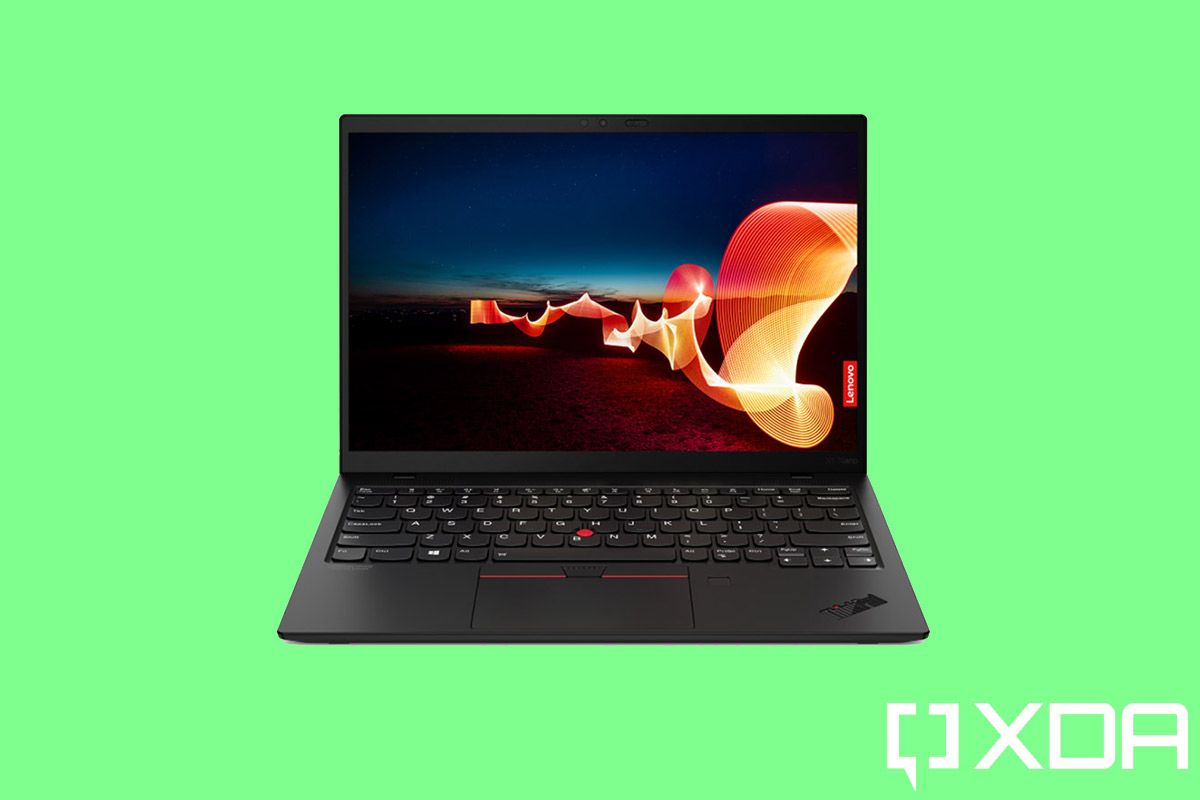
Lenovo ThinkPad X1 Nano
This laptop is ultra-thin and ultra-light while still being a ThinkPad. It weighs around two pounds, but doesn't make performance compromises.

